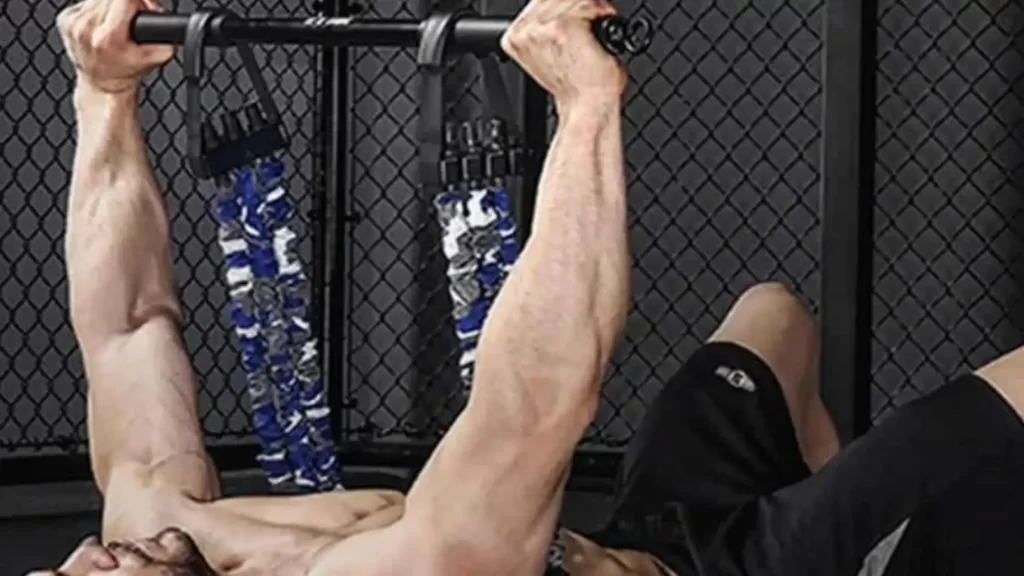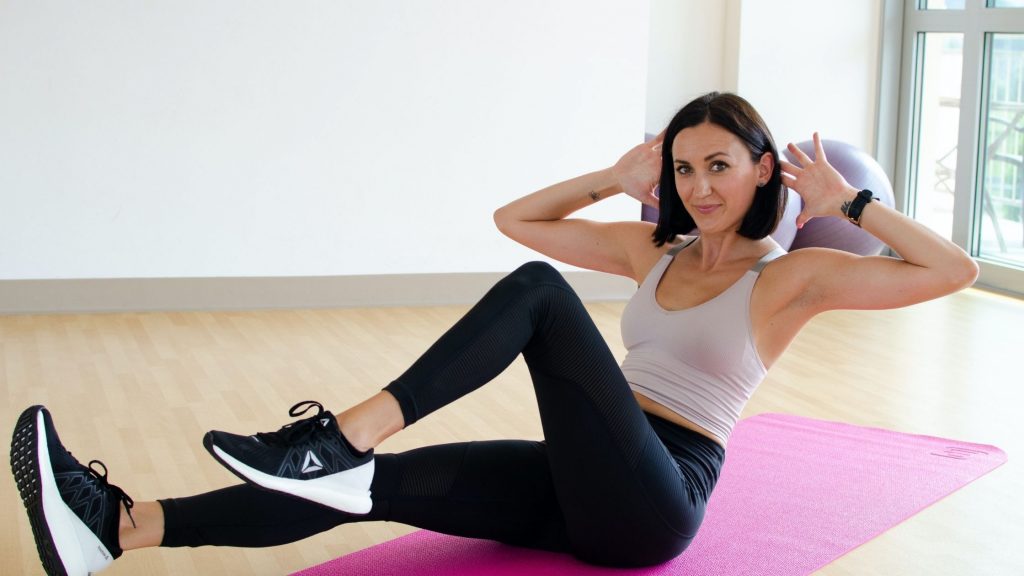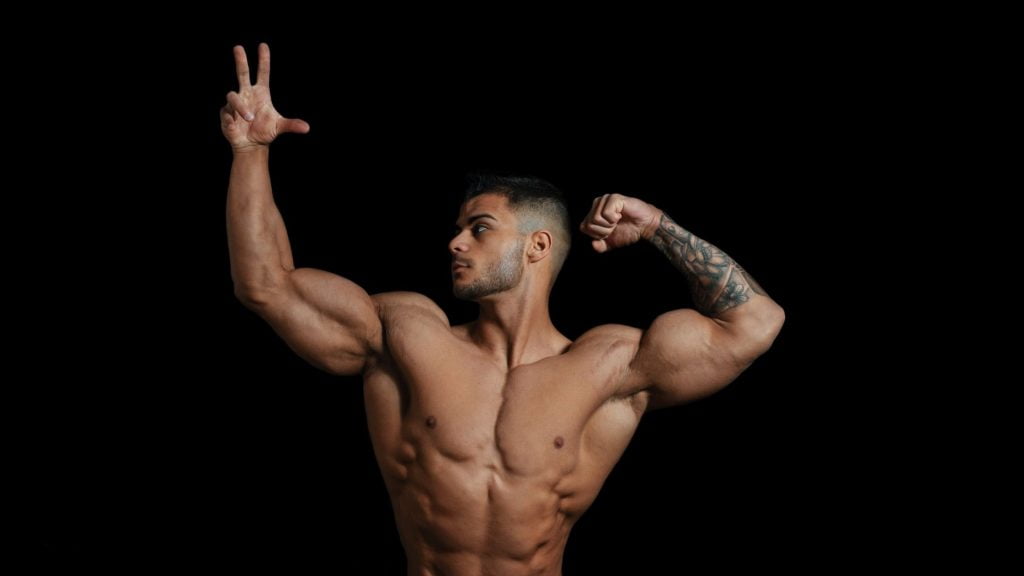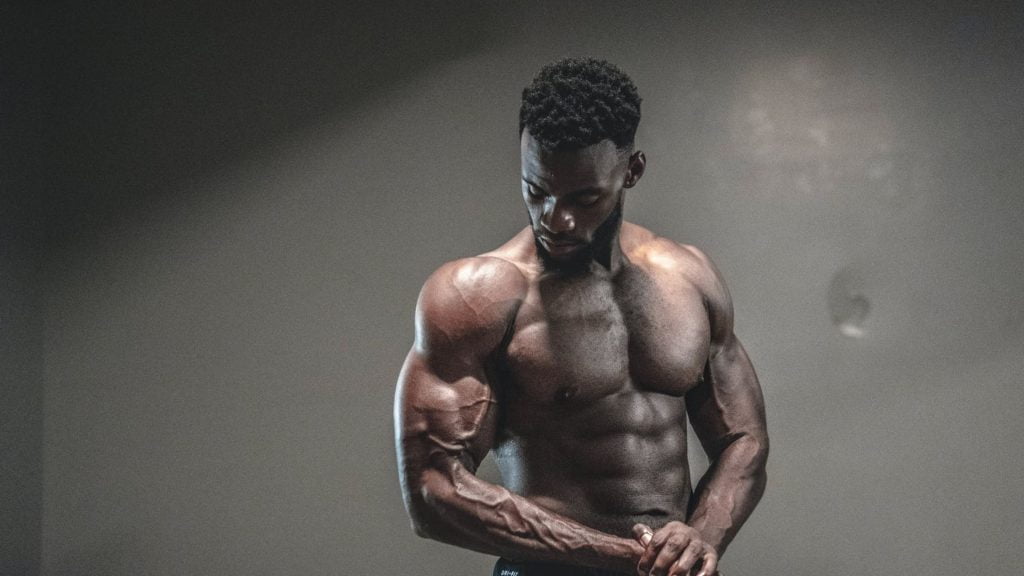IN THIS ARTICLE
All about squat and doing squat with bar
Squat With Bar is just a variation of squat, which is the king of all exercises. While performing this exercise you will work on more muscles as compared to others. If your goal is to strengthen your core, work on thighs, and build lean muscle then squat is best for you. Squat exercise has many variations it can be done with the bar, kettlebell, dumbbell and resistance band. In this article, we will focus on squat rod.
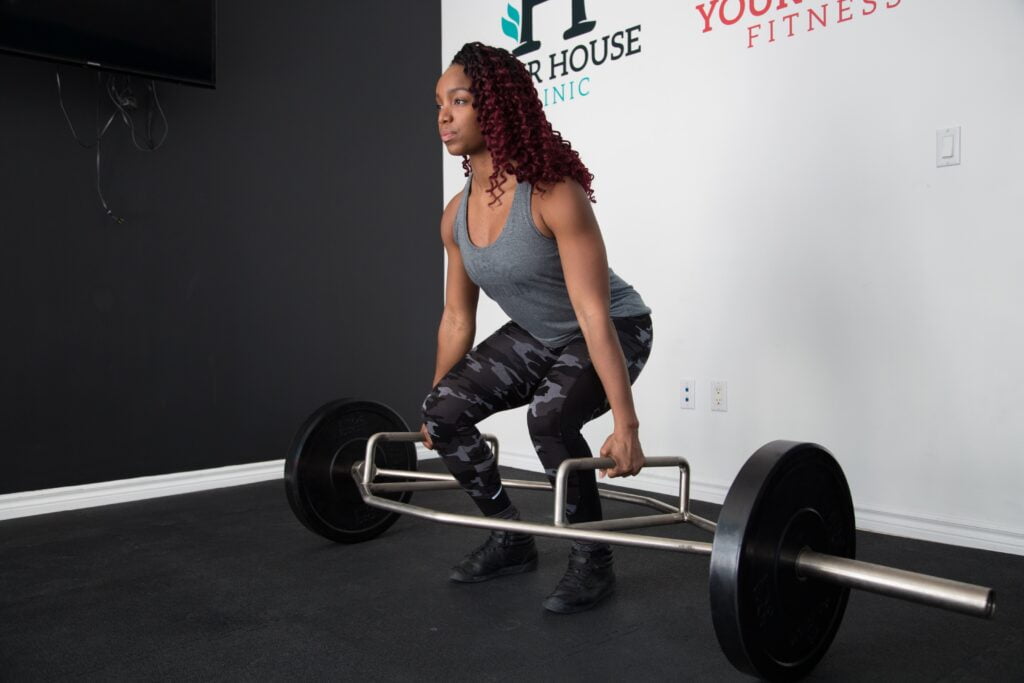
Squats engaged more muscles and produced a greater hormonal response than other weighted exercises.
– Fact
How to do squat with bar?
Squat With Bar is a relatively very easy exercise. Stand with your feet with more than your shoulder-width apart. This will allow you to do deeper squats. Hold a barbell with an overhand grip across the upper body.
Avoid placing the bar on the neck, hold the bar on your traps so that upper back muscles will be engaged. Take the weight of the bar and slowly perform the squat by placing your back straight and head up. Lower yourself till your hips are aligned with your knees. A deeper squat is more beneficial and effective. Abs, back and legs are targeted. Squat with squat rod is known as a barbell squat.
Benefits of squat with squat rod
1. Builds muscle mass in the lower body
The weights that are added in the bar activate your muscles more than in a normal bodyweight squat.
2. Burn calories
If you do a proper form of squat then you can burn more calories and increase your fitness level.
3. Improve weight training exercises
If you are doing squat with the bar regularly then you can improve your form in other weight exercises like the deadlift, bench press etc.
Variations of Squat With squat rod
1. Front squats with barbell
Squats with barbells strengthen the legs. Stand in a shoulder-width feet apart. Hold the barbell on the top of the chest with an overhand grip. Triceps will be parallel to the floor to provide support to handle the weight of the bar.
Inhale and gradually lower your hips until thighs become parallel to the floor. Pause at the bottom and then come back to the starting position. This exercise requires full strength to hold the weight and great mobility for the full range of motion. Muscles targeted in the front squats are quadriceps, hamstrings, glutes, shoulders, lower and upper back.
2. Barbell back squat
Barbell back squat helps to strengthen the lower body. Place a barbell in a rack and come under the bar put it behind the neck across the top of the back. Grip the bar with hands wider than shoulder width. Now lift the chest, squeeze the shoulder blades. Take out the bar from the rack now perform squat. This exercise targets many muscle groups including quadriceps, hamstrings and glutes.
The main difference between the barbell front squat and the back squat is the position of the barbell. In the front squat, the rod is supported by the front deltoids, while in a back ( squat with squat rod ) the bar is supported by the trapezius and rear delts.
3. High bar squat
High bar squat is a kind of squat where the bar is placed on top of the shoulder and feet are shoulder-width apart with toes pointing slightly outward. The High bar squat position helps to get more upright position and thus getting more depth as well. More depth leads to more activation of the anterior side and also allows to train greater motion range too.
High bar squats help to get more ankle and more hip flexibility. If someone has limited ankle and hip flexibility then it will not be easy to get deeper into the squatting position. It is mostly used by Olympic lifters and is also called the Olympic style of squats.
4. Low bar squat
Low bar squat position is hen bar is placed low on upper back; bar sits on posterior deltoid. Feet are shoulder wide and point slightly outwards as well. This movement is more forward-leaning and not upright, unlike high bar squats. The low bar position helps to build the posterior chain of muscles which includes glutes and hamstring. The low bar puts less stress on the quadriceps.
It is better for someone looking to activate glutes and hamstring. This is beneficial for someone who has limited mobility as knees do not go in front of ankles. It is less stressful for the knees as well and builds good upper body flexibility. Low bar squats should always be done in flat shoes or minimalist running shoes as this helps to keep shin more vertical which increases the involvement of glutes and hamstring. Low bar squats also help to lift more.
When it comes to comparing both of them or deciding which is better, it is not easy to choose as both are different and involves different group of muscles. If building a posterior chain is your goal then go for a low bar and if building quads is the goal then go for a high bar thus you have to choose it according to your needs. It is best to involve both of them in your workout.
5. Overhead squat
The overhead squat with a squat rod is a complex exercise but it gives you immediate results. It can be beneficial for strength, power and fitness athletes. Start with the barbell hold overhead with a wide grip. Keep your back straight slowly go in-depth so that the hip crease becomes slightly below the knees with the full foot down. Keep the barbell overhead and core tight return to the starting position. This requires shoulder mobility and stability.
Mistakes To Avoid While Doing Squat With squat rod
1. Lifting heels
Some people lift their heels when they lower down while doing squat with a bar. This puts strain on your joints and knees. You should lower your weight on the heels rather than put away from the heels.
2. Knee going outer
If your knees are going too far forward while doing squat is not good for the joints. Do not allow your knees to go beyond your toes end.
3. Placing your foot incorrect
Feet provide you strength while squatting. Placing your foot far apart is the incorrect posture. This form will not provide you with a full range of squat benefits in a squat with bar exercise. Always place your feet shoulder-width apart.
4. You squat at speed
Do not be in a hurry! If you squat with bar fast then you increase the chances of injury. Control yourself and rest are also important to take in between the sets. You will get ample recovery and the best results if you control the speed and do it in proper form.
5. Drop your chest
Good posture is very important for any exercise and also, in a squat with a bar. Looking upwards makes a curve in your cervical spine and increase the risk of disc injury. Leaning too forward also make your back round and stresses the spine. The best posture is to keep your back straight.
6. Not going enough low
Many people do parallel squats this reduces the size and strength that you will build in your legs. This posture will hurt your knees and provide you with a limited range of motion. Make sure that your thighs become parallel to the ground while performing a squat with a squat rod.
ALSO READ: Glute Ham Raise - 3 Variants For Strong Legs

Types of the squat rod or bar
1. Traditional squat rod
This bar is perfect for squatting and can be used for all types of squats. The rod is commonly found in gyms.
2. Power bar
This bar is slightly different from the traditional squat bar as it is stiffer and does not whip. This bar is mostly used by powerlifters and athletes.
3. Safety squat rod
A safety bar has padded handles and a neckpiece that provides a cushion on the neck, traps and shoulders. The handles allow gripping them comfortable. This bar is great for those who have some shoulder issues and wants to do squat with heavyweights while performing squat with a squat rod.
4. Cambered squat rod
This bar has hanging weight plates much lower as compared to the traditional squat bar. It challenges your stability while doing squats. The design of the bar makes it difficult to stabilize in the bottom position. The should be used on the intermediate or advanced level.
5. Buffalo bar
It has a unique design, the bar is curved so that it sits on our back with a curve side downward. You can grip the bar more easily. Buffalo bar increase the lat engagement and keep the torso more stable. Due to its curvature hugs, this bar is more comfortable to carry.
What do weighted squats with bar do?
Squatting with a bar increase your strength and make stronger legs. Squat in the wrong way can increase strain in your joints. Squatting with a bar shape your quads, glutes and hamstring.
Do you need a squat bar?
If you are willing to increase the strength and build power. Plus if you are not on beginner level then you can use a squat bar. But if you are a beginner then you must first learn the proper form and increase the stamina to do sets of the squat.
Conclusion
The bodyweight squat is the most well-known exercise. It is perfect if you are a beginner. As your legs become stronger and you become more familiar with basic squat with a squat rod, you can increase the difficulty level by adding weight such as barbell squats version some are given above. Squats are large, strong motions that need a lot of energy and train a variety of muscles.
Include squat in your regular workout to take the maximum benefits. The squat is a powerful exercise. If you face difficulties in performing proper squat at the beginner level take your time to work on mobility and practice.



